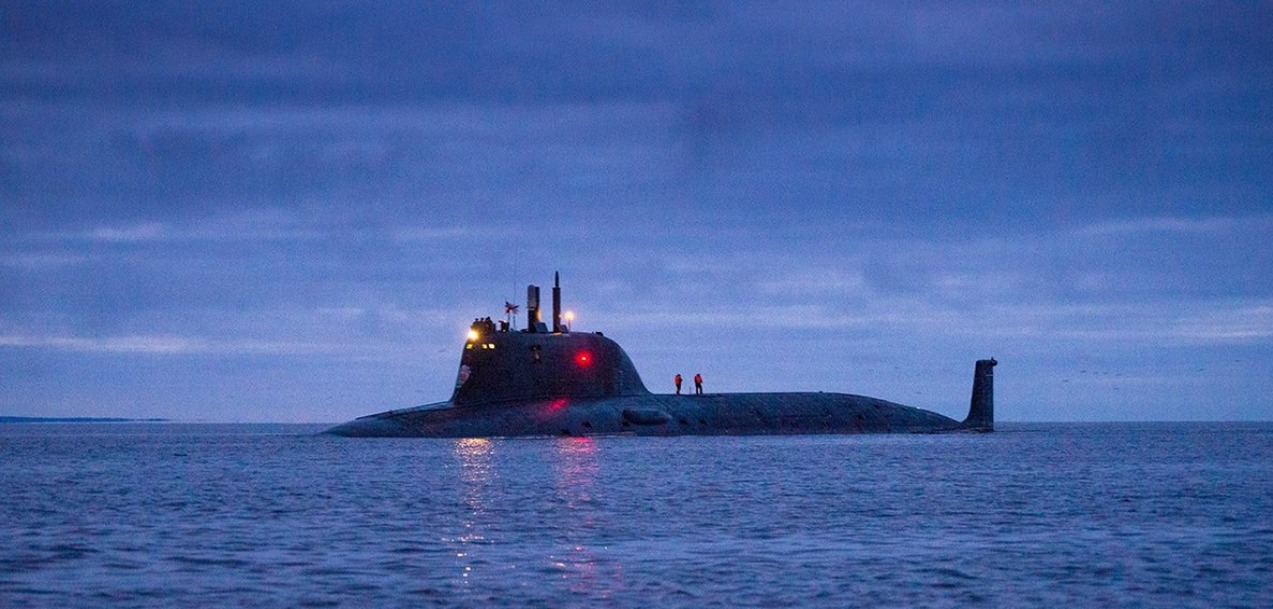Over six decades after the Cuban Missile Crisis, a Russian nuclear-powered submarine has reached Cuban port, where they will be engaging in joint exercises beginning June 12. From Norway to Cuba, the Russian flotilla led by frigate Admiral Gorshkov equipped with Zircon hypersonic missiles was monitored by a jittery NATO’s P-8 ‘Poseidon’ anti-submarine aircraft.
The arrival at the port of the Cuban capital is the culmination of a long detachment that began on May 17. The detachment of ships of the Northern Fleet left the city of Severomorsk and headed for the Atlantic through the designated areas of the Barents Sea.
The frigate’s main strike weapon is the Kalibr-NK missile system. It is also armed with the latest Zircon hypersonic missile, developed and produced by the Reutov NPO Mashinostroyenia (part of the Tactical Missile Armament Corporation).
But, the main part of the flotilla is one of the most modern nuclear submarines of Russia – Kazan. Cuba has assured that the submarine will not be carrying any nuclear weapons and poses no regional threat.
But, the timing of the port call right under the US nose comes as the Ukraine-Russia war is escalating, with NATO countries increasing their stakes in the war. Also, Cuba and the US being just 145 kilometers apart from their closest point doesn’t help the situation.
The Yasen-class are a series of nuclear-powered cruise missile submarines designed by the Malakhit Engineering Bureau and built at the Sevmash Shipyard (JSC PO/Joint Stock Company Sevmash), part of the USC (United Shipbuilding Corporation). The Kazan is capable of launching a range of anti-ship and land attack missiles. It is one of the quietest submarines in the Russian underwater fleet.
Apart from these two vessels, the flotilla has a fleet oil tanker, Pashin, and the salvage tug, Nikolay Chiker. The fleet’s arrival at the port of Havana will be heralded by firing 21 salvos from one of the Russian warships and it will be reciprocated by an artillery battery of Cuba’s Revolutionary Armed Forces.
Hans Kristensen, Director of the Nuclear Information Project, Federation of American Scientists, calls it an excellent opportunity to watch and learn more about the Russian submarines. “The inclusion of the Kazan nuclear-powered attack submarine in the Caribbean voyage offers the US Navy a unique opportunity to monitor and record the new Yasen (Severodvinsk) class sub in waters off the US East coast,” he wrote.

“For Putin, an effort to wave the flag – for NATO, a golden opportunity to track and learn,” he added.
The Barents Observer reported that Admiral Gorshkov, in exercise mode, put an approaching NATO P-8 maritime patrol aircraft in gunsight somewhere outside the coast of Norway.
The Russian Navy published a high-quality video on May 23rd that showed a P-8 aircraft tracking the flotilla. Steffan Watkins, a Canada-based OSINT specialist, said: “In the 23 May published video, you can see a P-8 Poseidon, which confirms the Russian Navy flotilla will be tracked from Norway to Cuba by multinational NATO forces, including aircraft and ships from US Navy, RCAF (Royal Canadian Air Force), RCN (Royal Canadian Navy), and others.”
The US Navy P-8A Poseidon (number AE6880) was relieved by another Poseidon (AE67D7) between the Bahamas and Florida. In addition to the anti-submarine aircraft, USS Truxtun, CGC Stone, and HMCS Ville de Quebec have also been shadowing the Russian flotilla.
“USS Truxton, HMCS Ville de Québec, and USCGC Stone conduct joint ops in the Atlantic. This “Tri-party” collaboration has ensured safe, open waters since 2015,” the US 2ndFleet wrote on X on June 7, obliquely hinting at the contours of their mission.
🚢🌊 Strengthening Atlantic Security 🌊🚢
USS Truxton, HMCS Ville de Québec, and USCGC Stone conduct joint ops in the Atlantic. This "Tri-party" collaboration has ensured safe, open waters since 2015.#USNavy #USCoastGuard #RoyalCanadianNavy @USNavy @surflant @USFleetForces pic.twitter.com/w2V8jNl6Nh
— U.S. 2nd Fleet (@US2ndFleet) June 6, 2024
The US has termed the Russian warship’s presence so close to home as notable but not concerning. It is seen in line with Russian President Vladimir Putin’s threat that Moscow could take “asymmetrical steps” elsewhere in the world in response to President Joe Biden’s decision to allow Ukraine to use US-provided weapons to strike inside Russia to protect Kharkiv, Ukraine’s second-largest city.
The US expects the flotilla to visit Venezuela, too, to conduct routine military drills.
During the Cold War, the deployment of Soviet nuclear missile sites on the island triggered the 1962 Cuban Missile Crisis.
Relations between Russia and Cuba have been on the upswing since 2022 when Cuban President Miguel Diaz-Canel met Putin. The two heads of state also met on May 9 during the annual military parade on Red Square outside the Kremlin.
Cuba is among the few countries that has not joined the international sanctions regime on Russia for its invasion of Ukraine. On the contrary, the relationship between the two states has improved since February 2022.
The Cuban President had earlier criticized the sanctions: “We are condemning, we are rejecting the expansion of NATO towards Russia’s borders.”
However, a US intelligence official has told the reporters, as previously reported by the EurAsian Times, that the Russian military activity globally has intensified amid rising tensions between the two sides since it launched the invasion of Ukraine.
“This is about Russia showing that it’s still capable of some level of global power projection,” the official said.
- Ritu Sharma has been a journalist for over a decade, writing on defense, foreign affairs, and nuclear technology.
- The author can be reached at ritu.sharma (at) mail.com
- Follow EurAsian Times on Google News




